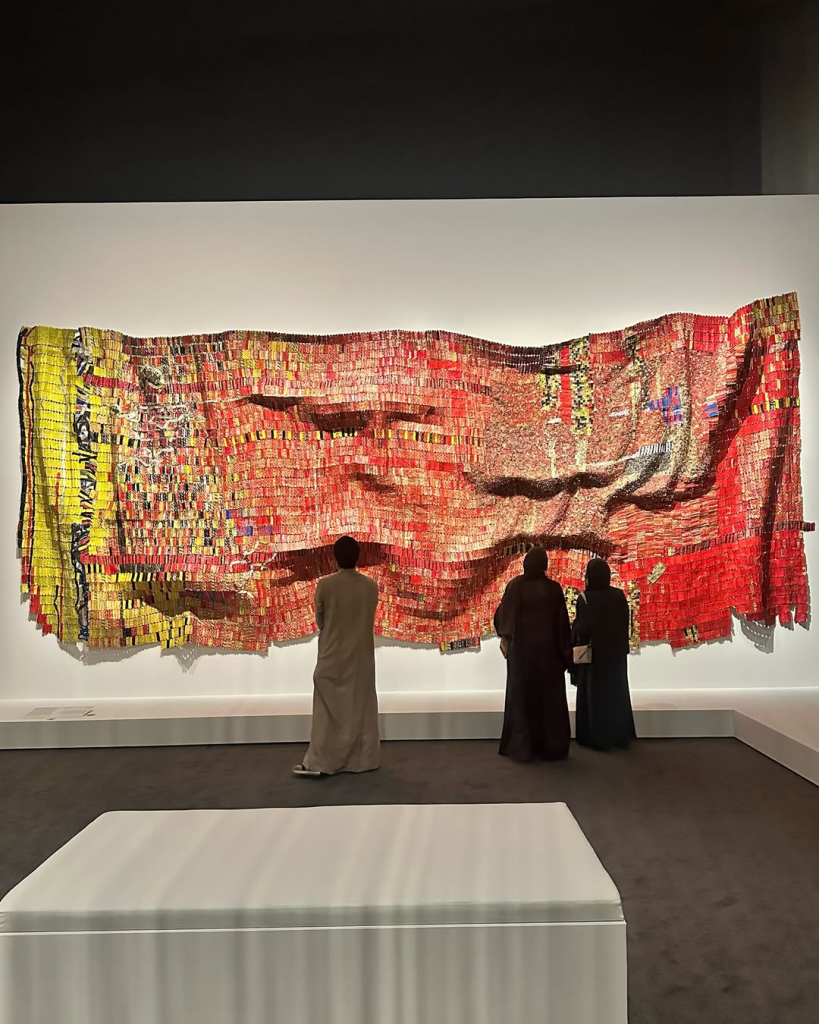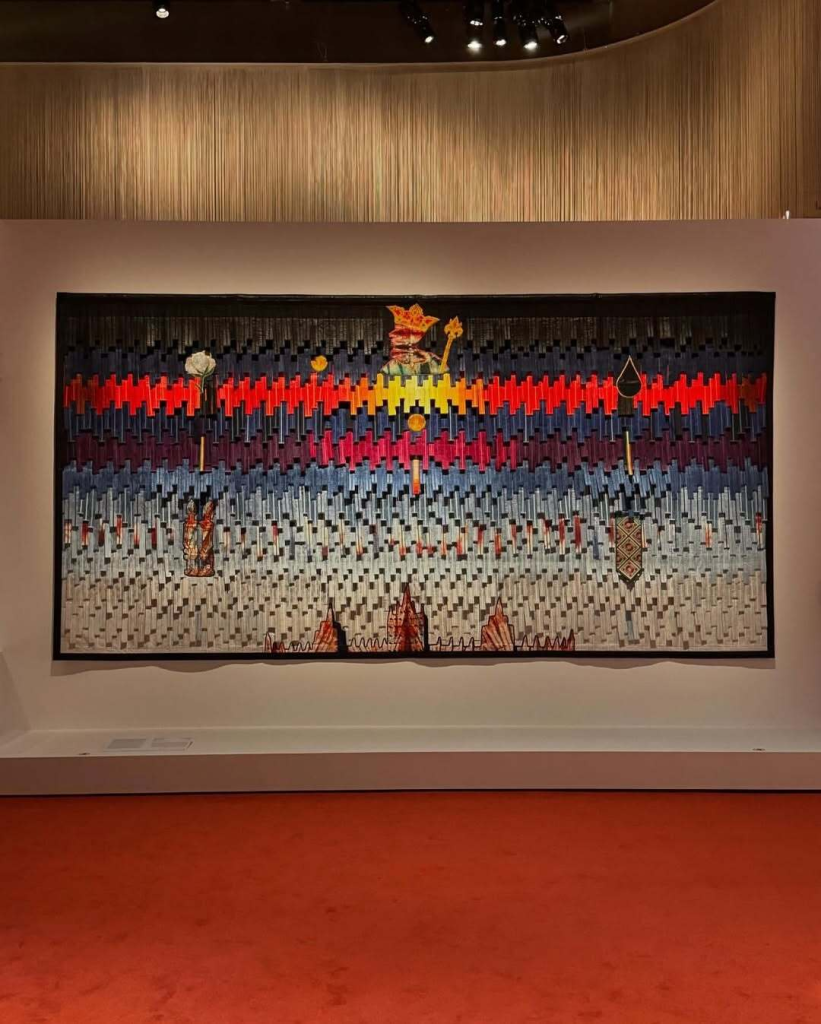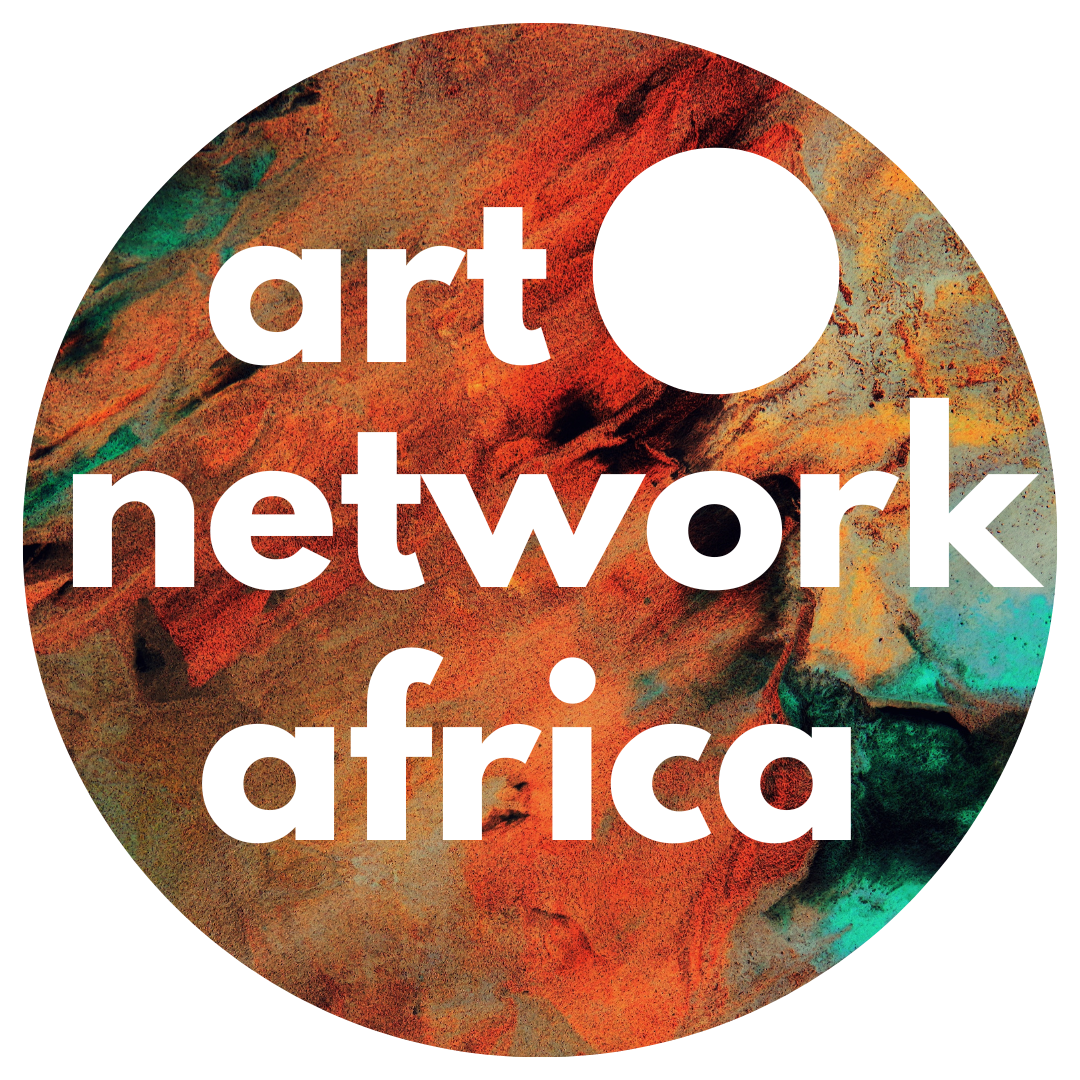The Louvre Museum in Abu Dhabi has just opened its doors to the public with a historic celebration of African Power in an exhibition titled: Kings and Queens of Africa: Forms and Figures of Power. This exhibition, in collaboration with the Musée du Quai Branly – Jacques Chirac in Paris and key governmental institutions across the continent, aims to honor the powerful kingdoms and civilizations that have significantly influenced Africa and the world. Running from January 29th to May 25th, the exhibition explores artifacts lost during the colonial period, showcasing the mastery of African carving, painting, and tapestry techniques. Among the featured artists are El Anatsui and Abdoulaye Konaté.

Kings and Queens of Africa: Forms and Figures of Power features 300 objects from the Musée du Quai Branly – Jacques Chirac collection in France. This exhibition is the first in the Middle East to highlight and illustrate Africa’s remarkable material culture, both pre-and post-colonization The exhibition is curated by Hélène Joubert, Head Curator of the African Heritage Unit at the Musée du Quai Branly – Jacques Chirac, with the support of two associate curators: Malick Ndiaye El Hadji, Curator of the Théodore Monod Museum of African Art IFAN-Cheikh Anta Diop in Dakar, Senegal, and Cindy Olohou, an independent curator. Additionally, Mariam AlDhaheri, Curatorial Referee at the Louvre Abu Dhabi, has contributed to the exhibition’s curation.
The collection begins by examining the Antiquity period (8th century BC to 5th century AD) and the Middle Ages (5th to 15th century) in Sub-Saharan Africa. The exhibition places particular focus on the Kingdoms of Ghana, Mali, and Great Zimbabwe, illustrating how the materials used in everyday life influenced European, Arabic and Indian architecture, textiles, craftsmanship, and more.
Due to trade relations and close connections between Europe, the Arab world, and the Indian subcontinent in the 15th century, Africa integrated with these communities, particularly Arabic and Indian cultures. This exchange led to the adoption of various artistic styles and techniques that remain evident today along Africa’s eastern coast, bordering the Indian Ocean. Over the centuries, especially in the 18th and 19th centuries, African societies integrated diverse cultures. This continues to shape the continent into a dynamic and multifaceted region; contemporary Africa.
El Anatsui’s work, Detsi, embodies this multiplicity of identity through its evolving meaning. The Ewe language provides the title Detsi, which people interpret in various ways, including as “redness” or “soaking” (according to Google). In this context, it refers to a traditional soup that turns red when made with palm fruit. This stunning large-scale artwork reveals new meanings with each display, engaging both the artist and viewers—much like the ever-changing landscape of the Sub-Saharan region.
Many of these artifacts were obtained through colonial looting, particularly by French forces, which had strong ties with NATO countries such as Belgium. Belgium, in particular, had a long and ruthless history in Sub-Saharan Africa, especially in the Congo. The Mali Empire has had a profound impact on Africa and beyond, holding the largest repository of gold, which has historically been central to the wealth of Arabian and Indian royalty.

Abdoulaye Konaté explores the legacy of the Mali Empire in his piece Le Mali un trésor. The empire played a crucial role in shaping global economic systems, as its vast gold reserves influenced trade and currency valuation in Europe—an influence that continues today. While this exhibition celebrates Africa’s immense contributions to civilization, it also raises the unresolved issue of restitution, as many of these artifacts remain in foreign collections. Nonetheless, the exhibition serves as a powerful reminder of Africa’s enduring role as the cradle of humanity and a cornerstone of global social and economic development.
Among the guests is Nigeria’s Minister for Arts, Culture, and Tourism, Hannatu Musa Musawa, who will oversee a display of Nigerian sculptures.
Click here to view the Musée du Quai Branly – Jacques Chirac collection.


